When you climb to one of the upper levels of the most famous tower in the world, then this is the most notable building when you look down.
The Eiffel Tower is the most prominent landmark in Paris and provides amazing views of the city, including that of a complex of buildings across the Seine River.
These buildings were constructed for a specific purpose and are still used to house several museums in Paris today.
In this article, you’ll discover some of the most interesting facts about the Palais de Chaillot, a structure with a remarkable history.
1. It’s located in a popular area in the 16th arrondissement of Paris
The 16th arrondissement of Paris is separated by the huge park called the Bois de Boulogne in the west, and a fantastic landmark on top of a hill in the east.
The Palais de Chaillot is located on Chaillot Hill in an area of Paris that borders the Seine River. The Eiffel Tower can be found on the other bank of the river.
This immense structure is one of the most noticeable landmarks when you climb the Eiffel Tower as it’s adjoined by the Trocadéro Gardens and its beautiful fountains on one side, and Trocadéro Square on the other.
This particular area of Paris is known today as the Trocadéro area and is definitely a must-visit location in Paris.
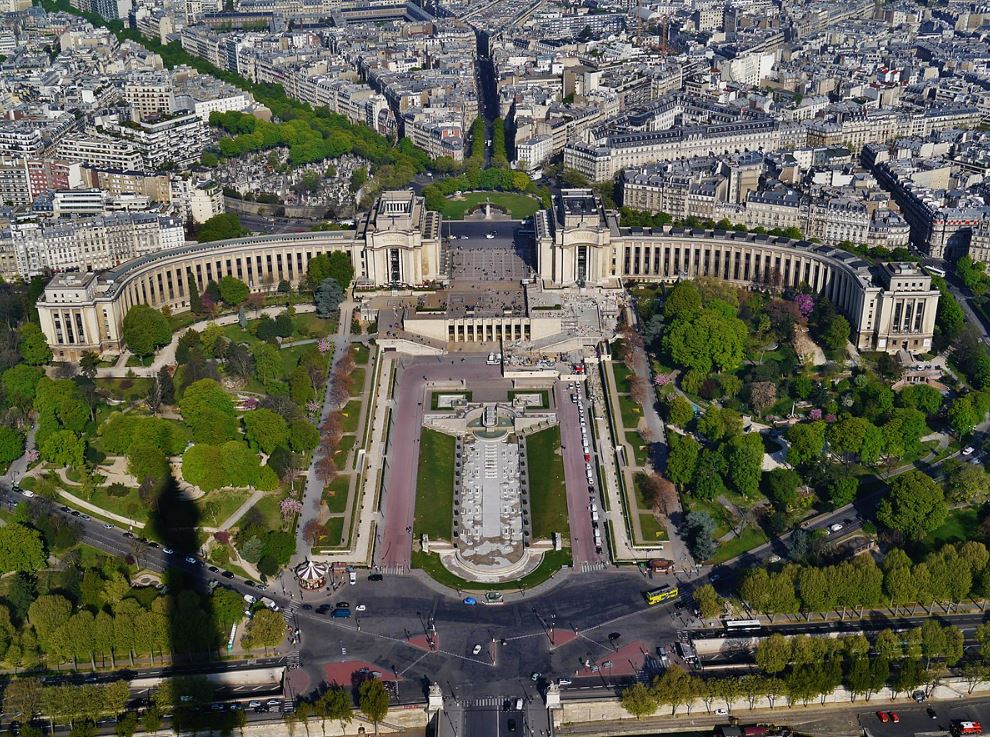
2. It was constructed for a popular event shortly before the outbreak of WWII
Like many other famous landmarks in Paris, the Palais de Chaillot is a remnant of an important event that took place in the city.
In this case, it served as one of the main buildings of the Exposition Internationale of 1937. The Palais de Tokyo nearby is another building that was constructed for this event.
The Palais de Tokyo still houses the Musée d’Art Moderne de la Ville de Paris today and also features space for art exhibitions.
The exhibition featured pavilions of 45 different countries and it was visited by over 31 million people between May 25 and November 25 of the year 1937.
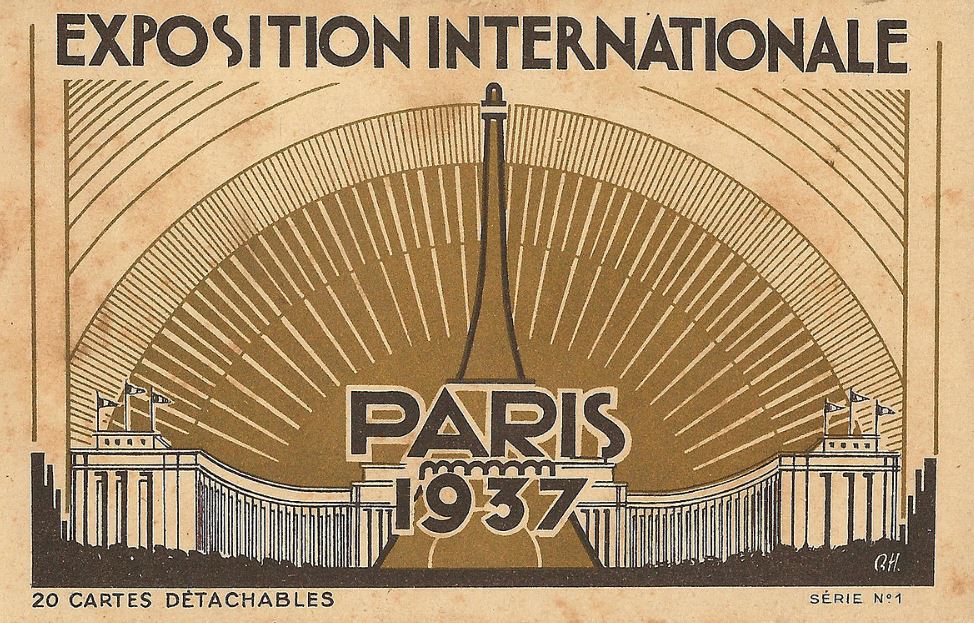
3. It partially replaced another building that was constructed in 1878
Chaillot Hill was still an undeveloped piece of land in the west of Paris until the 1860s. This changed in 1867 when another World Fair was held in Paris.
In 1878, plans were made to build a structure on top of this hill and it was named the Palais du Trocadéro. Today, this area is named after this former structure.
Completed for the 1878 World’s Fair, the palace had the design of a concert hall with two towers and two wings, one on each side. It was a Romantic building that featured multiple elements derived from Byzantine architecture.
This structure was demolished to the basement level in 1936 to make way for the new Palais de Chaillot.
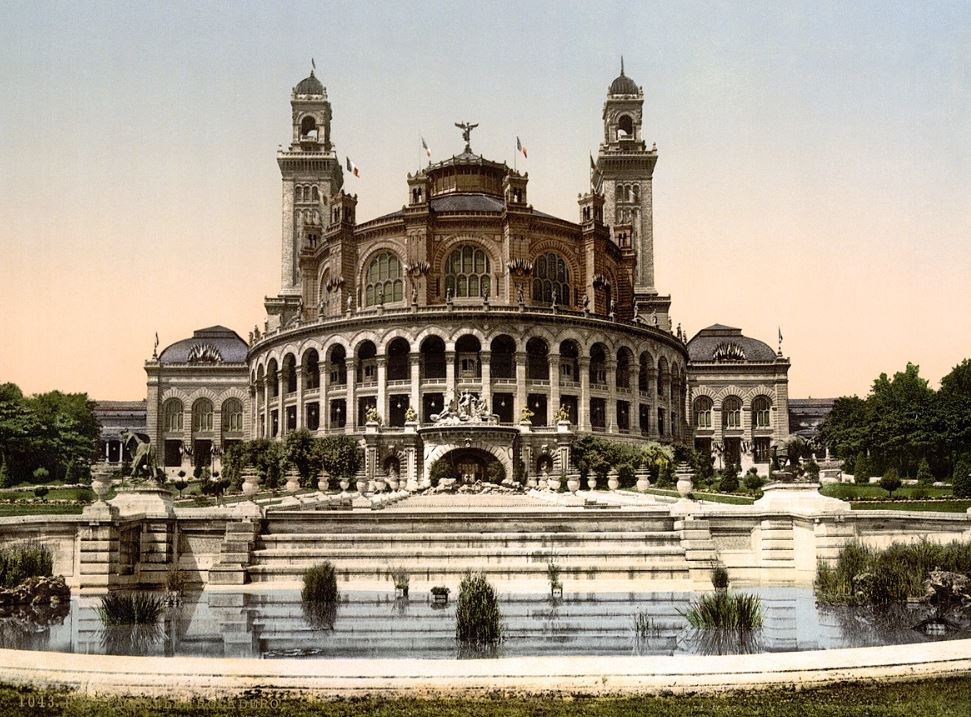
4. It was designed in a modern architectural style by several French architects
The exposition in 1937 was officially known as the “Exposition Internationale des Arts et Techniques dans la Vie Moderne.”
This means that it exhibited everything related to modern life, and this means that the buildings were designed in modern styles.
The Palais de Chaillot features a type of International style architecture known as Streamline Moderne. This was inspired by the Art Deco style that was popular at the time.
The buildings were designed by three French architects named Louis-Hippolyte Boileau, Jacques Carlu, and Léon Azéma.

5. The terrace in front of the building is decorated with 8 gilded sculptures
The place in front of the Palais de Chaillot is known as the “Terrace of the Rights of Man” (more about this later) and is one of the most popular spots in Paris.
It’s arguably the best place to take iconic pictures because it provides an amazing view of the Eiffel Tower which stands across the Seine River.
In front of the modern building complex, you can find 8 gilded statues that were carved by sculptors Alexandre Descatoire, Marcel Gimond, Jean Paris dit Pryas, Paul Cornet, Lucien Brasseur, Robert Couturier, Paul Niclausse, and Félix-Alexandre Desruelles.
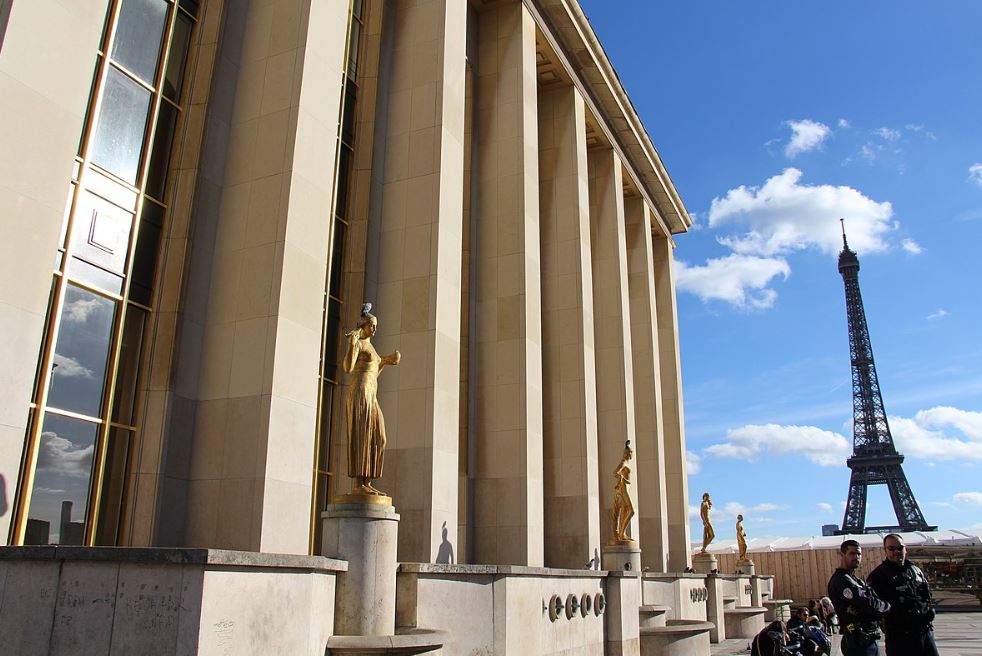
6. One of the most iconic pictures of World War II was taken here
The Terrace of the Rights of Man was once the scene of a horrible visit, that of Adolf Hitler during his trip to Paris in 1940.
Hitler was a great fan of architecture in Paris and was accompanied by his main architect, Albert Speer, and a sculptor named Arno Breker.
It became one of the most iconic images taken during World War II and has a significant meaning in the subsequent history of this area.
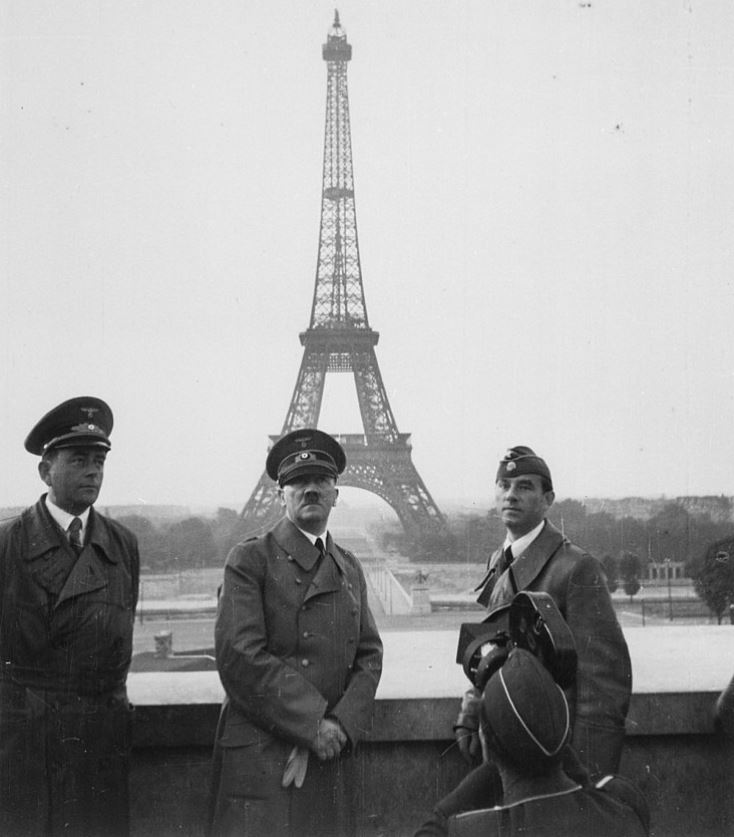
7. The United Nations held an important General Assembly here in 1948
The Terrace of the Rights of Man was named as such because the United Nations held 2 important General Assemblies at the Palais de Chaillot.
The third edition was held here in 1948 and the sixth in 1951. The first one was a significant moment in human history as it resulted in the U.N.’s Universal Declaration of Human Rights.
Apart from these events, it was also on this plaza that the over 2,800 soldiers listened to the American President Harry S. Truman when he gave his victory speech.
The buildings are decorated with various quotes referring to these important events as well as other wisdom.
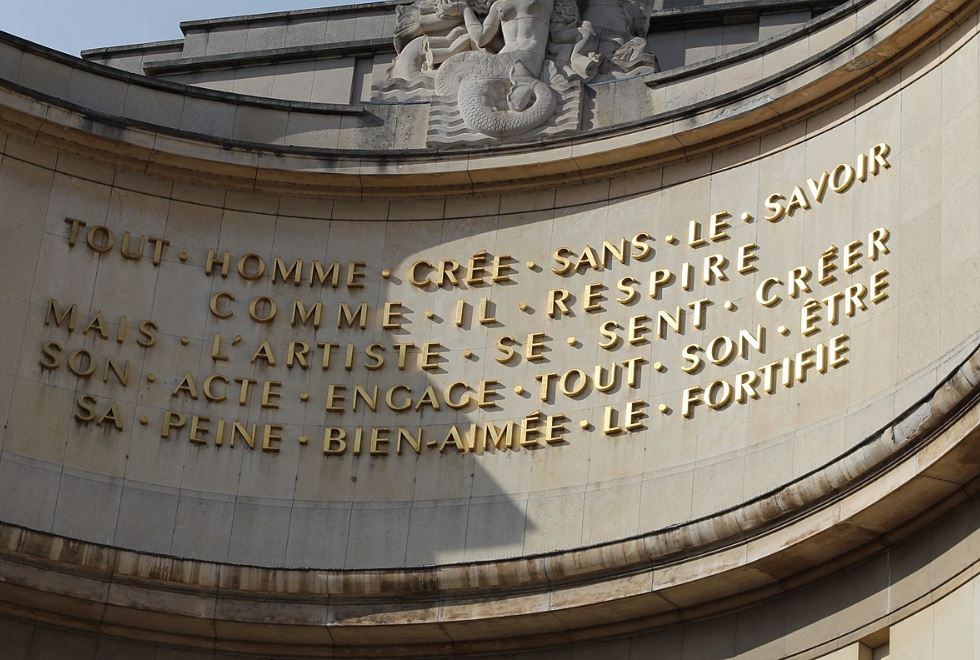
8. The building still houses a number of popular museums today
Just like the Palais de Tokyo, the interior of the Palais de Chaillot was been transformed so it could be used to house various museums.
These include the:
- Musée national de la Marine (naval museum)
- Musée de l’Homme (prehistory and anthropology)
- Musée national des Monuments Français (part of the Cité de l’Architecture et du Patrimoine)

The structure below the esplanade holds a theater with two auditoriums known as the Théâtre national de Chaillot.
The Salle Jean Vilar can hold 1250 spectators while the Salle Gémier is much smaller with just 420 seats.



